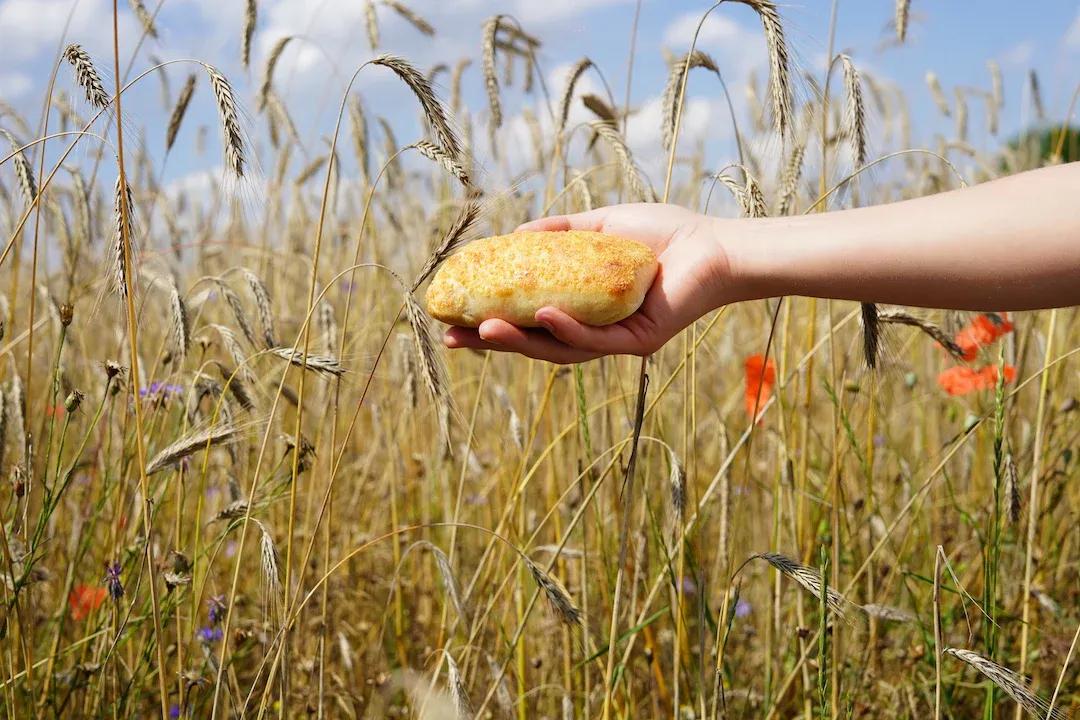Gluten-Free Eating – More Than Just a Food Trend
What does it mean to be gluten-free? Which foods contain gluten? Is it possible to be gluten free and vegan? In this article, we offer an in depth explanation on these topics and offer some useful tips and guides for you.

Gluten-free Eating – The most
important facts and tipps
The last few years have indicated how more and more diet trends are becoming increasingly popular. The first example: a gluten free diet. A few years ago, the term ‘gluten free’ problem resulted in a question mark for most people. However, nowadays almost every supermarket has an entire section devoted to gluten free products. Even restaurants are keeping up with the trend.
Contrary to popular belief, most people have a good tolerance for gluten. If you’re healthy and show no clear issue with gluten-containing products, then there’s no reason to give up bread, pasta etc. This is very different for people with celiac disease, a wheat allergy or gluten sensitivity. These individuals have to be disciplined in the adaptation of their diet to make it gluten-free.
Contents of this article:
- What is gluten?
- When should I eat gluten-free?
- Gluten intolerance – can I still enjoy food?
- Which foods contain gluten?
- Fallen into a gluten trap?
- Which foods are gluten-free?
- Gluten-free and vegan- is it possible?
- Gluten-free throughout the day: our helpful tips
What does it mean to avoid gluten? In which kinds of foods is gluten found? Is a gluten free and vegan diet possible? This article highlights all the important facts and tips you need to know more about gluten free food choices.
What is gluten?
Gluten (glutinous protein) is a component found in many wheat varieties (e.g. wheat, spelt, barley rye, and einkorn). In the food industry, it is frequently used as a natural stabiliser, thickening agent, gelling agent, flavouring agent, aroma agent or also as a colourant. Gluten is the reason why our bread has such a pleasantly fluffy consistency. Simply put, gluten is kind of a magic ingredient and ubiquitous within the food industry.
When should I eat gluten-free?
Do you often feel sick after consuming gluten-containing products? Do you suffer from stomach cramps, fatigue, headaches, diarrhoea, joint or muscle pain? These could be early signs of a gluten intolerance or allergy.

Gluten intolerance, allergies and co.
In addition to a gluten intolerance (celiac disease), there are also other allergies in connection to wheat and gluten. What are these exactly and what are common symptoms? We’ll explain.
What is Celiac disease?
Celiac disease, also a gluten intolerance, is a chronic (and painful) inflammation of the intestines. The cause is an intolerance of gluten protein which is found in a variety of wheat varieties and wheat-containing products. Should you suffer from celiac disease, you should be very strict about cutting out these foods from your diet. This is essential for the long term treatment and eventual avoidance of these symptoms.
You might have noticed that more and more people suffer from celiac disease–but what’s the reason? There’s no easy or obvious answer here because a variety of factors play a role in causing celiac disease. Two big factors are other infections and your immune system. However, the conditions of the plant itself are also important. The fertilisation, location, climate and harvest time of the grain can also lead to increased gluten intolerance. Additives used in wheat products are also suspected of causing celiac disease. So far, the explanations behind these complex connections have not been studied enough to offer a satisfactory answer.
What is a wheat allergy?
A wheat allergy is when you display a reaction after consuming wheat containing products. Symptoms can include stomach pain, vomiting, swelling or skin rashes. The difference between a wheat allergy and celiac disease is that your body is reacting to wheat pollen and wheat products– gluten therefore does not play a role. That means: wheat products need to be avoided, but other grain types can be consumed no problem.
What is a gluten sensitivity?
Gluten sensitivity, compared to celiac disease, is classified as a hyper-sensitivity to gluten. This can develop through the consumption of bread, pasta etc. over time. Symptoms include stomach aches, bloating, diarrhoea, joint and muscle pain (similar to celiac disease). The difference is, that there isn't inflammation of the intestines, which means that most individuals suffering from gluten sensitivity can cure their symptoms quickly by reducing their gluten intake.

Gluten intolerance – can I still enjoy food?
Of course! Intolerance and allergies do require a bit more planning and restructuring of one's diet, but it's far from the end of the world. Or the end of pleasure. Nowadays, supermarkets are full of gluten free alternatives that make life much easier (and tastier!) for people suffering from gluten intolerance. This even makes the occasional slice of toast totally fine! Furthermore, all unprocessed food items (anything produced non-industrially) are always welcome and actually important for all that want to follow a healthy diet. Last but not least, gluten is not an ingredient that your body absolutely needs, and therefore does not need to be supplemented.
Which foods contain gluten?
First and foremost: industrially processed foods. Many ready-made and semi-ready products have gluten-containing ingredients (e.g. flour, flour stabiliser, wheat bran) to help ‘shape’ the product and maintain its texture and consistency. Meat and sausage products, sweets and snacks and many ‘light’ products replace fat and sugar with gluten-containing ingredients. To help you keep an overview, we’ve put a list together of common gluten-containing foods.
1. Grains
- Wheat
- Barley
- Rye
- Oats
- Spelt
- Green spelt
- Primal grains (e.g. Urkorn, Einkorn, Kamut, Emmer, Rotkorn)
7. Flavoured drinks
- Tea
- Coffee
- Lemonades
8. Heavily processed foods that are high in additives
- Light-Products
- Pudding powder
- Conserved products (canned)
- Ready-sauces (z. B. Soy or fish sauce, Ketchup, Mustard)
- Ready-dressings
- Ready-made meals
Ready-made meals?! Really?! Most yes, but not all! The Every. product range is full of delicious creations, free of gluten-containing grains. Naked Taco, Tikka Masala and Happy Quinoa to name a few. Although we are not yet certified gluten free, there are many meals that don't contain gluten-containing ingredients--just read our ingredient lists, we have the right product for you! These products will not only satisfy your hunger, they are delicious and can be easily incorporated into your lifestyle.
Here an overview:
- Cozy Beets
- Happy Quinoa
- Dal Delight
- Golden Curry
- Dreamin Red
- Glow Up
- Tikka Masala
- Green Boost
- Harvest Risotto
- Ratatouille Romance
- Naked Taco
We are working on certifying our entire range as gluten-free. Therefore, celiac patients or any others with a high gluten sensitivity will be able to enjoy our dishes!
Where else is gluten found?
You thought gluten is only found in food items? Think again. The industries’ favourite gluten protein is also found in medicines, hygiene products (toothpaste), beauty products (lipstick) and even kitchen cleaning liquids (e.g. for a coffee machine) contain gluten. Our tip: read through the ingredient list. Ingredients such as Triticum (wheat), Hordeum (barley) or Avena (oats) should be avoided if you suffer from celiac disease. In some cases, products will be labeled with helpful information like ‘can contain traces of gluten’.
Which foods are gluten free?
We hope you're not concerned that your food options are extremely limited. Rest assured, there are plenty of gluten free foods with which you can cook and bake and enjoy diverse and delicious meals! Here is a list we compiled for you of foods that are gluten free:
- Rice and wild rice
- Corn
- Cereals & Pseudo cereals (Millet, Buckwheat, Amaranth, Quinoa)
- Nuts
- Oilseeds (z. B. Linseed, sesame, pumpkin seed, sunflower seed)
- Legumes
- Fruit and vegetables
- Salad
- Potato and potato starch
- Different flour types (e.g. from plantains, soy, teff, chickpeas, coconut, hemp, almonds or lupins)
- Non-flavoured milk products
- Meat, fish and shell fish (unprocessed)
- Eggs
- Soy products (Tofu und Tempeh)
- Sweeteners (e.g. honey, maple syrup, rice syrup, agave syrup)
- Natural herbs and spices
- Non-flavoured fruit juices, teas and
- Wine and Champagne
- Binding agents (e.g. corn starch, locust bean gum, guar gum)

Gluten free and vegan, is that possible?
As you might have noticed from the list of gluten free foods, it's actually very doable to eat both vegan and gluten free. Legumes, tofu and tempeh are allowed and also important for plant-based protein intake. Carbohydrates in the form of rice, potatoes and sweet potatoes are also welcome on your plate. Bread can be swapped out for rice or corn flours or simply select gluten free options (these are however, usually a bit pricier). Nowadays you can even find gluten free pasta and gluten free flours in addition to gluten free bread. You also don’t have to do without your morning muesli either, with gluten-free oat and millet flakes, puffed quinoa, amaranth or buckwheat, your food dreams will be answered.
Many of you will probably be asking the question whether a gluten free diet is great for weight loss. It's true, that avoiding wheat products saves carbohydrates which in turn saves calories. But nowadays, there are a multitude of gluten-free alternatives that make the switch effortless. So while you can reduce your carb intake, it doesn't have to be the case, just cause you're eating gluten free. Furthermore, carbohydrates are an essential energy source and part of a balanced, healthy diet. So carbs really shouldn't be banned from your plate.
Gluten-free through the day: our most helpful tips
By now we know that celiac need to replace gluten containing products with gluten free alternatives. We’ve put together some tips for you to not only help you avoid gluten every day, but also the stress that comes with constantly monitoring your food choices:
- Preparation is key: to get through the day gluten free requires a bit of planning. This can be annoying initially, but it's really worthwhile. Whether at home, in the office, on vacation or at your favourite restaurant–do the necessary research to know which foods you can eat and which best to avoid.
- Get creative! Pizza from your favourite Italian. Tricky. Homemade spelt-patties? Not so tricky! Of course certain foods are restricted, but that doesn’t mean you can’t still eat a diverse range of delicious foods. Use this opportunity to discover new, exciting recipes and get cooking. The internet is full of them!
- Do your homework before you give it a taste: we mean this quite literally. If you're not sure whether a product contains gluten or not, read the ingredient list carefully. Certified gluten free products are easily identified with the ‘gluten free’ label or gluten free icon (a crossed through ear of wheat).
Discover more articles in the Every. Magazine:
- Intuitive Eating – The Science of Listening to Your Body
- Vegan Protein Sources – The Key Facts
- Healthy Breakfast – The Best Start to Your Day
- Superfoods – How 'Super' and How Healthy are They Really?
- A Strong Immune System With a Healthy Diet
For even more foodie-content follow us on Instagram and join the Facebook Community to get involved in meal creations and to stay up to date on all things Every.

